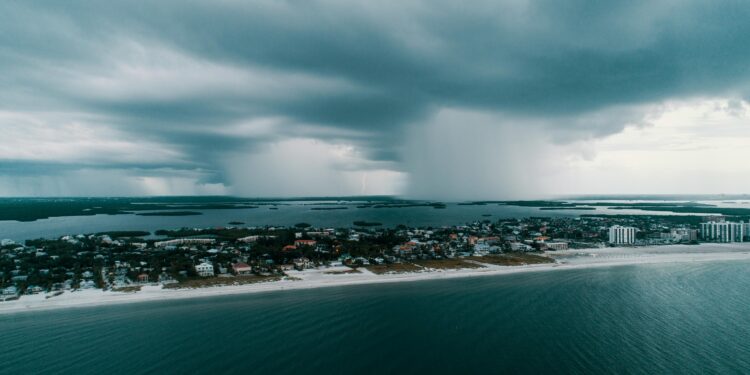Over 3 Million Lose Power as the Storm Moves Offshore, with Damages Estimated Between $60-$75 Billion
Hurricane Milton swept through Florida, leaving behind a trail of destruction that has forced residents and officials alike to confront the aftermath of one of the most feared storms in recent history. With intense rainfall, powerful winds, and widespread flooding, the Category 1 hurricane wreaked havoc across central Florida before moving off the state’s east coast and into the Atlantic Ocean.
The storm made landfall just two weeks after Hurricane Helene struck Florida’s west coast, adding to the devastation. In its path, Milton left millions without power, caused significant damage to infrastructure, and disrupted air travel across the state, including major airports in Tampa and Orlando.
Damage Assessment and Flooding Concerns
While the exact scope of the destruction will take days to fully assess, early reports suggest that Milton’s damage has been widespread. The National Hurricane Center (NHC) warned of catastrophic flooding, forecasting up to 18 inches of rain in some areas. As of early Wednesday, large portions of Florida were still experiencing heavy rainfall and high winds.
One of the most dramatic reports of damage came from St. Petersburg, where Hurricane Milton tore through Tropicana Field, home of the Tampa Bay Rays, ripping apart sections of the stadium’s roof. The storm also knocked out power to more than 3 million homes and businesses, according to PowerOutage.us, while major flooding was recorded as far south as Naples Bay, over 100 miles from where the hurricane made landfall.
The National Oceanic and Atmospheric Administration (NOAA) warned that urban and river flooding could continue to worsen in the coming days, putting further strain on already overwhelmed communities.
Economic Impact and Disaster Costs
Early estimates place the total damage caused by Hurricane Milton between $60 billion and $75 billion, according to disaster modeler Chuck Watson from Enki Research. The reduction in the storm’s intensity—downgrading from Category 3 to Category 1 as it made landfall—may help mitigate some insured losses, but experts warn that the financial toll will still be substantial.
Florida’s agricultural sector, a key part of the state’s economy, has also suffered considerable disruptions. Tampa-based fertilizer giant Mosaic Co. preemptively shut down its Florida operations in advance of the storm. This follows operational curtailments caused by Hurricane Helene just weeks earlier, which hurt phosphate production and shipments. The double blow from two powerful hurricanes within such a short time is likely to strain the sector further.
Government Response and Recovery Efforts
Florida Governor Ron DeSantis has assured residents that the state is prepared for recovery operations, with more than 50,000 linemen ready to restore power as soon as it is safe. Melissa Seixas, president of Duke Energy Florida, expressed concerns over the vulnerabilities in the state’s energy infrastructure, noting that just days before Milton struck, the company had finished replacing transformers destroyed by Hurricane Helene.
President Joe Biden has also pledged federal support for the recovery effort. The president was briefed by Homeland Security Advisor Liz Sherwood-Randall and the Federal Emergency Management Agency (FEMA) Administrator Deanne Criswell on the initial impacts of the storm. Biden stated that the federal government is ready to deploy military personnel to assist in the recovery efforts if needed.
Looking Ahead
As Hurricane Milton moves offshore and heads toward the Atlantic, residents of Florida are left to assess the immense damage caused by back-to-back storms. With power outages, flooding, and agricultural disruptions continuing to unfold, the road to recovery will be long and challenging. While the storm’s intensity lessened as it made landfall, its impact will be felt across the state for weeks and months to come.
You might like this article:DOJ Signals Potential Google Breakup in Landmark Antitrust Case











